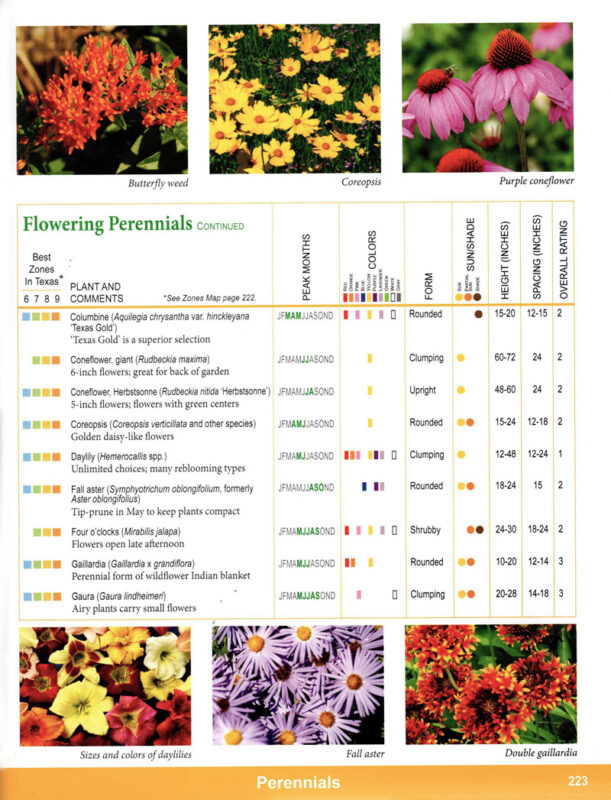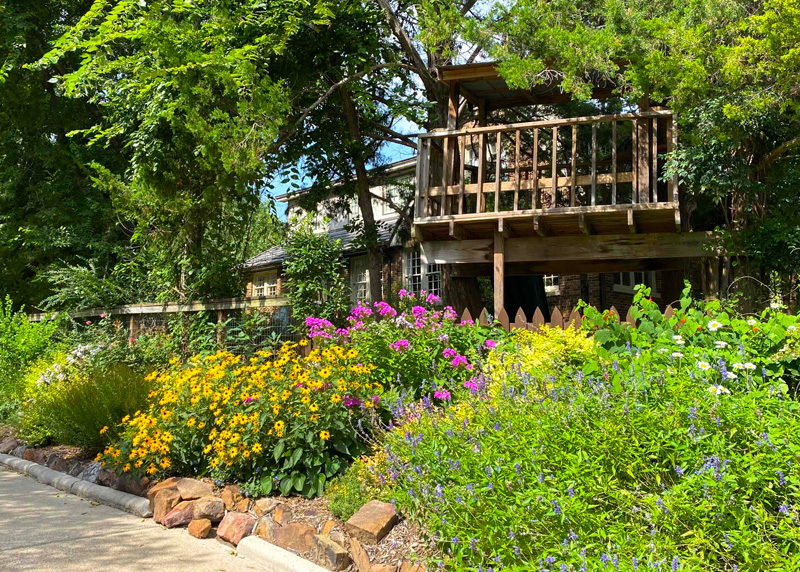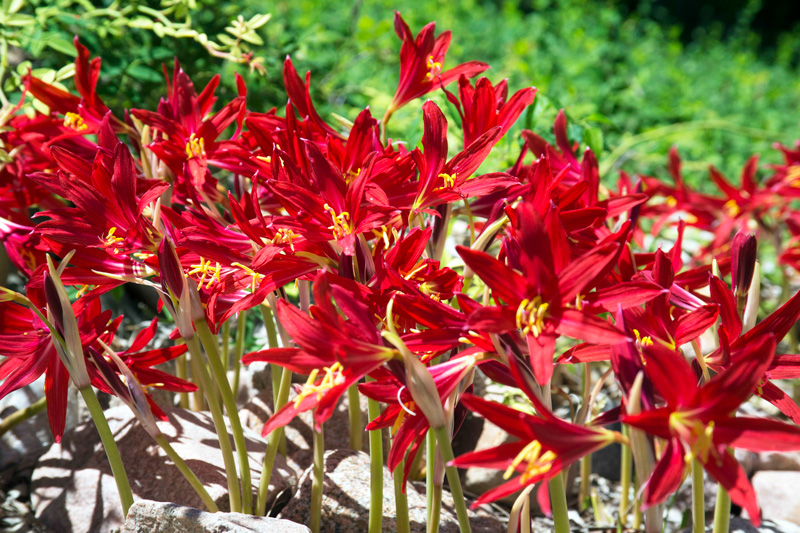Planning Perennials

Texas is blessed with some outstanding perennial flowers. However, if there’s a new perennial garden in your dreams for this Growing Season, do your homework now to avoid disappointments later. Let me point out a few critical facts.
• Perennials do come back year after year. That part is certainly true. Some spend their “off” seasons as bulbs, others as fleshy roots. But some types thin and weaken over the years, gradually dying away. We refer to them as “short-lived” perennials. You’ll have to replant them once in a while. That’s normal.
• Almost all types of perennials bloom for only two or three weeks every year. Between those yearly flowering cycles, all you get to see is leaves – or bare ground.
• For that reason, perennials look best if they’re planted in mixed beds. If you have 10 or 15 types of perennials planted into little pockets of color, something will always be popping up. That’s where the real charm of perennial gardening steps forward.
• Perennials require a lot more planning than annuals. You must know their mature sizes. You also have to make note of their flower colors and blooming times, so you can establish a color scheme for your gardens month after month.
• Draw the bed out on graph paper and start assigning space for each plant that you want to include. Perennials that bloom in late spring, summer and fall are available in pots in nurseries now. It’s a great time to start planting. Save a few spaces, though, for types you can’t find currently. Plant annuals as space holders until the perennials become available.
• Because they’re going to be growing in the same soil for several years, perennials deserve special bed preparation prior to planting. Incorporate 4-6 inches of various types of organic matter (sphagnum peat, compost, finely ground pine bark mulch, rotted manure, etc.) along with 1 inch of expanded shale into the top 10 inches of topsoil. Use a rear-tine rototiller for the best blending.
• Use a few small evergreen shrubs as visual anchors within the bed to give it interest in the winter dormant season. Include annuals for their extended blooming seasons, and don’t overlook plants with colorful foliage. It’s not solely about flowers.

Which perennials are best?
I spent 6 weeks writing Chapter 9, “Perennials,” in Lone Star Gardening, including the 11-page, ultra-comprehensive chart that gives details of the 120 best perennials for Texas. It’s difficult to choose my favorites from that huge group, but I would begin with:
Spring color: Narcissus and jonquils (buy types that establish, multiply and rebloom year after year), grape hyacinths, thrift and other trailing phlox, candytuft, iris, autumn sage (blooms from spring until frost), Byzantine gladiolas, St. Joseph lily, crinums, and purple coneflower.
Summer color: Goldsturm gloriosa daisies, daylilies, cannas, hardy hibiscus (mallows), and summer phlox.
Fall color: Fall crocus (Sternbergia), naked lady lily, oxblood lily, spider lily, Mexican bush sage, Gulf muhly (grass), fall aster and chrysanthemums.
Winter color: Hellebores and sweet violets.



